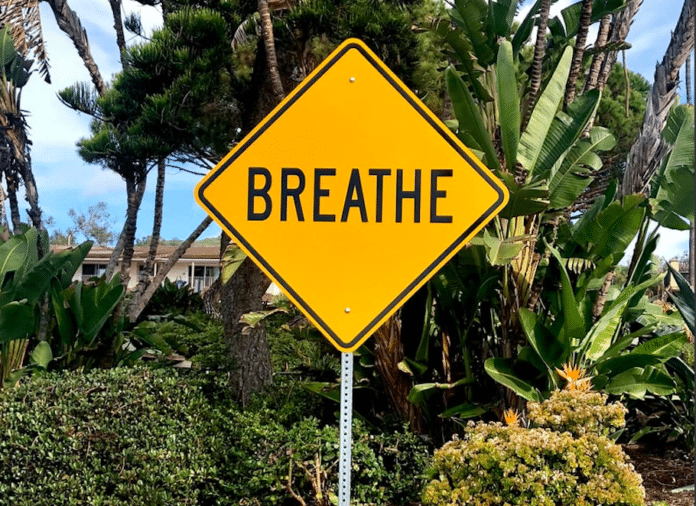Breathing may feel like an automatic mechanism that you don’t have much control over but it isn’t as simple as inhaling and exhaling. Did you know that there is a correct way to breathe and that mastering the proper technique can have measurable effects on our physical and mental health? James Nestor, author and journalist, explains that breathing properly “lowers the burden of the heart.” He, along with many other breathing specialists, recommends breathing through the nose as opposed to the mouth because “When you breathe through your mouth, you’re exposing your lungs to everything in the environment.” [1] However, when we breathe through the nose, it filters, heats and treats raw air” and “can trigger different hormones to flood into our bodies… can lower our blood pressure… store memories.” [2]
Nasal Breathing Is Critical to Health
Nasal breathing also produces nitric oxide, “a molecule that helps oxygen, blood and nutrients travel through the body” [3] and is critical in protecting our body against pathogens, improving blood flow, “improving oxygen uptake and reducing pulmonary vascular resistance” [4]. Our noses are our first line of defense for our bodies against foreign pathogens, and they do a pretty good job at protecting us. If you want to further increase your nitric oxide levels, drink fresh beet juice as the nitrates “present in beetroot juice has been studied for its effect on the cardiovascular system by converting to nitric oxide.” [5]
Additionally, how we breathe can impact our face shape. According to a study published by the National Library of Medicine, “All subjects with mouth-breathing habit exhibited a significant increase in lower incisor proclination, lip incompetency and convex facial profile.” [6] Patrick McKeown, author of Oxygen Advantage, and John Mew found that breathing through the mouth as a child can cause crooked teeth and a more narrow jaw. [7] If you are a mouth breather, some specialists, like Patrick McKeown, recommend sleeping with mouth tape, to encourage proper nose breathing, and being aware during the day to ensure you are breathing through your nose.
Improve Your Nasal Breathing
We recommend trying out Nestor’s series of steps to improve your nasal breathing. The first step is to become aware of how you breathe naturally. Next, consciously breathe through your nose while also breathing slower than you normally do. Nestor suggests a breathing practice called “resonant breathing” in which you breathe in through your nose for 5-6 seconds and then out through your nose for 5-6 seconds. This will allow you to get more oxygen into your lungs. [8]
In addition to breathing through our noses, it is also beneficial to have proper tongue placement while breathing. Patrick McKeown explains that breathing through the nose with our tongues pressed on the roof of the mouth will actually allow for better, less restricted airflow. You can try this out on yourself to better understand. Let your tongue rest in the middle of your mouth not touching the roof, breathe in. Now breathe in with your tongue pressed to the roof of your mouth. You may notice it feels more comfortable and there is less resistance in your inhale.
[1], [3], & [8] https://www.cbc.ca/radio/whitecoat/how-to-breathe-better-and-why-it-matters-especially-in-a-pandemic-1.5978198
[2] https://www.npr.org/sections/health-shots/2020/05/27/862963172/how-the-lost-art-of-breathing-can-impact-sleep-and-resilience
[4] https://www.ncbi.nlm.nih.gov/pmc/articles/PMC1745376/pdf/v054p00947.pdf
[5] https://pubmed.ncbi.nlm.nih.gov/26653541/
[6] https://www.ncbi.nlm.nih.gov/pmc/articles/PMC4295456/
[7] https://buteykoclinic.com/wp-content/uploads/2016/11/Buteyko-Mouth-Breathing.pdf



